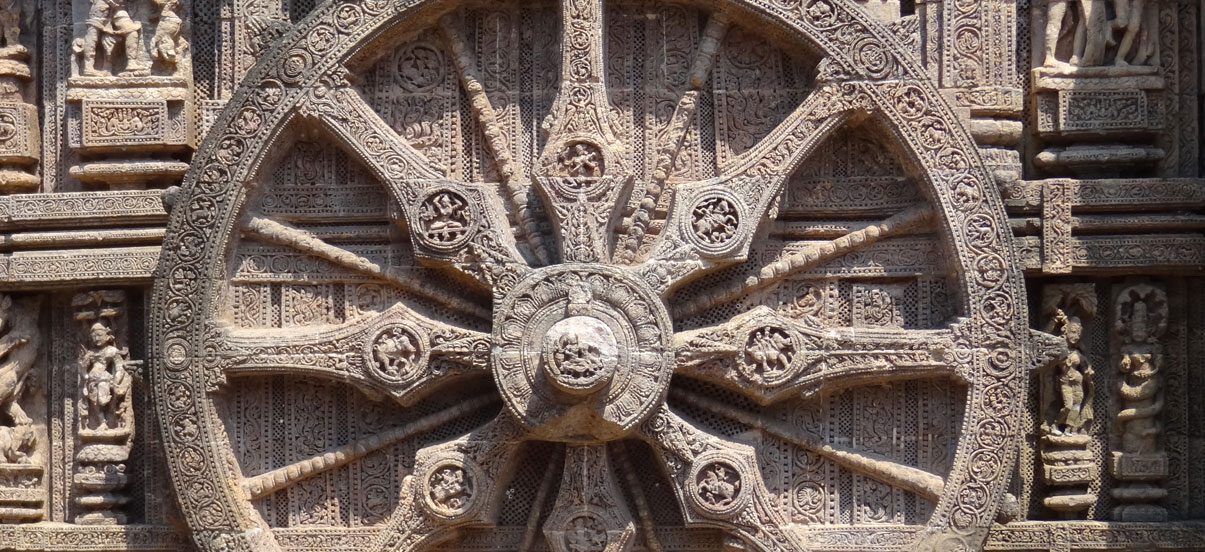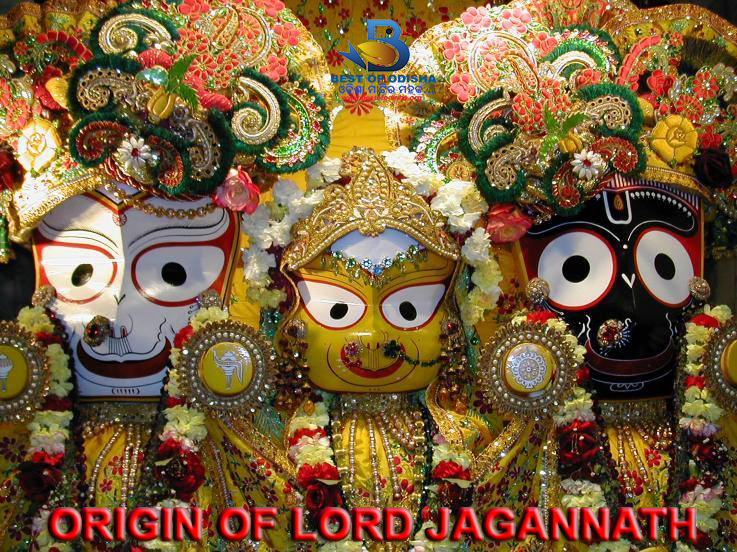May the lord be a divine creation or a recreation of tribal deity, Lord Jagannath bears the honor of his highness as Jagatara Natha or Lord of the world due to his divine superiority over thirty three crore gods and goddesses in the universe. Although several interpretations encircle the secrets of his Origin, the supreme lord has been worshiped mostly as reformation avatar of Lord Vishnu or Narayan. In depth study by many authors in the myth, mystique and historical evidences of the origin of Jagannath has brought new facts to surface.
The present day God Lord Jagannath originally manifested in Purusottama-kshetra “Nila Kandara” as a giant sapphire gemstone avatar called “Nilmani” or vigraha named “Neelamdhava”. After the disappearance of Neelamadhava the Lord remanifested in His present Chaturdha vigraha daru form. The significance of the Lord’s manifestation in wooden form is revealed by Lord Brahma.
Origin of the Lord :
Indradyumna, the king of Malava in Satya Yuga and a great devotee of Vishnu Once dreamt of Nilamadhava Vishnu and got curious to find where the Lord was being worshipped. His emissaries adventured in all directions to discover the truth. One among them was a clever Brahmin named Vidyapati who adventured towards east. Inside dense forests of Utkala he took shelter in the house of the Savara King Viswavasu. In order to extract the secrets of Nilamadhava, clever Vidyapati married to Viswavasu’s daughter Lalita. Clever Vidyapati persuaded Viswavasu thru Lalita to take him along while going inside dense forest to worship Nilamadhava. The supreme GOD Lord Jagannath was installed in a blue cave Niakandara in the form of “Nilmani” the sapphire gem stoned vigraha Neelamdhava. Viswavasu agreed on the condition that Vidyapati will be taken to the cave and brought back from there with a blindfold.
Although smart Vidyapati was blindfolded, but he sprinkled mustard seeds on his way so that he can retrace the path by himself from the sequence of mustard plants. Having heard the entire story from Vidyapati, King Indradyumna started with his retinue for Utkal to see Nilamadhava. In the dense forest he followed the grown up mustard plants to reach Nilakandara, but found the lord missing. A divine voice aired him to build a temple on Nilasaila (Blue Mountain)at sea shore. The king immediately ordered for temple construction. He searched for a carpenter to make the deities. King Indradyumna found a mysterious old Brahmin carpenter who appeared and took the responsibility and took a few days to accomplish that. Surprisingly the carpenter insisted that he would not be disturbed while he was carving the deity and start working closed door. Every one including King and his Queen were very much anxious and come every day to the closed door and there was sound of working. After 6-7 days waited anxiously outside his room, but after some time, all sound stopped. The impatient Indradyumna’s Queen worried what had happened and assuming the worst, opened the doors – only to find the deity half-finished and the carpenter vanished! The mysterious carpenter was none other than Vishvakarma, the heavenly architect. The king was distraught as the deity had no arms and legs. Utterly repentant that he had interrupted the carving, the king was only pacified when the muni (sage) called Narada appeared and explained that the form the king now sees is a legitimate form of the supreme personality of godhead. The second story here was narrated to further explain and remove any doubts and confusion.
On completion of the temple, the king went to Brahmaloka to invite Brahma to consecrate the temple. But, Brahma being in meditation, he had to wait for nine Yugas. The temple thus got buried in sand in his absence. In the mean time, a new dynasty came to rule at Utkala. Galamadhva, a king of that dynasty, detected the buried temple. He was considering installing images in the temple when Indradyumna with Lord Brahma appeared before him. Both the kings had a tussle over the ownership of the temple. However, Lord Brahma decided in favor of Indradyumna and asked him to install deities in the temple.
Now, the king was at a loss as to where to find the deities from. Therefore, god told him in his dream that he would be floating in the sea in the form of a log of wood. Then Sage Narada assured Indradyumna that Vishnu would appear to him in the temple form of three wooden images. When a big tree, radiant with light was seen floating in the sea, Narada told the king to make three idols out of it and place them in a pavilion. Indradyumna got Visvakarma, the architect of Gods, to build a magnificent temple to house the idols and Vishnu himself appeared in the guise of a carpenter to make the idols on condition that he was to be left undisturbed until he finished the work. But just after two weeks, the Queen became very anxious. She took the carpenter to be dead as no sound came from the temple. Therefore, she requested the king to open the door. Thus, they went to see Vishnu at work at which the latter abandoned his work leaving the idols unfinished. But a divine voice told Indradyumana to install them in the temple.
The three idols represent the god Jagannath, his elder brother, Balabhadra and their sister, Subhadra. The wooden idols being worshipped are renewed during special occasions. This wooden idol prepared from a log of wood floating on the ocean finds a mention in the Rig Veda, where it is referred to as Purushottama. Sudarsana was added and, therefore, the quadrangle worship.
1











